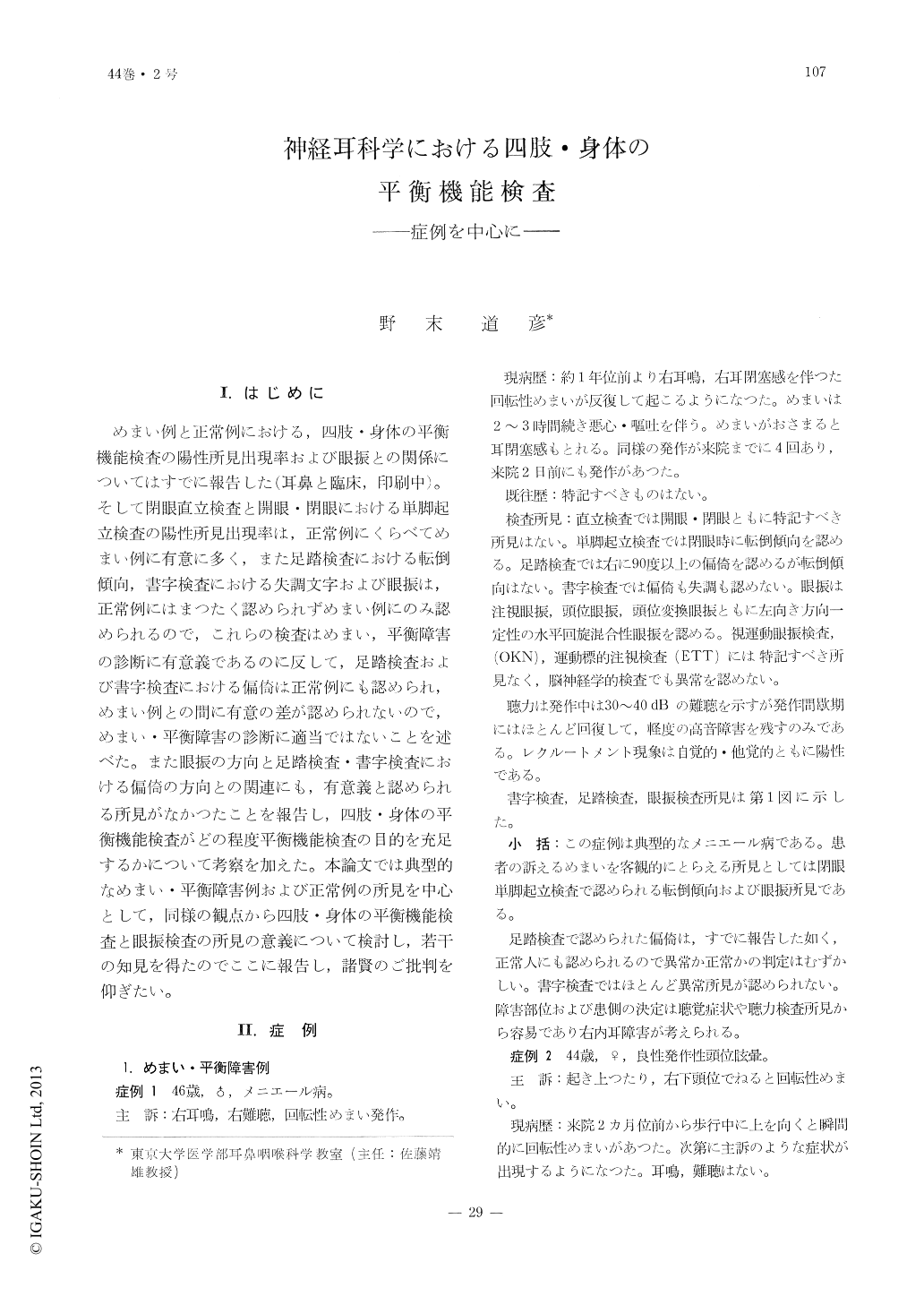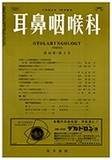Japanese
English
- 有料閲覧
- Abstract 文献概要
- 1ページ目 Look Inside
I.はじめに
めまい例と正常例における,四肢・身体の平衡機能検査の陽性所見出現率および眼振との関係についてはすでに報告した(耳鼻と臨床,印刷中)。そして閉眼直立検査と開眼・閉限における単脚起立検査の陽性所見出現率は,正常例にくらべてめまい例に有意に多く,また足踏検査における転倒傾向,書字検査における失調文字および眼振は,正常例にはまつたく認められずめまい例にのみ認められるので,これらの検査はめまい,平衡障害の診断に有意義であるのに反して,足踏検査および書字検査における偏倚は正常例にも認められ,めまい例との間に有意の差が認められないので,めまい・平衡障害の診断に適当ではないことを述べた。また眼振の方向と足踏検査・書字検査における偏椅の方向との関連にも,有意義と認められる所見がなかつたことを報告し,四肢・身体の平衡機能検査がどの程度平衡機能検査の目的を充足するかについて考察を加えた。本論文では典型的なめまい・平衡障害例および正常例の所見を中心として,同様の観点から四肢・身体の平衡機能検査と眼振検査の所見の意義について検討し,若干の知見を得たのでここに報告し,諸賢のご批判を仰ぎたい。
The diagnostic significance of the equilibrium tests of the limbs and body and the relation of nystagmus was examined in the patients with Ménière's disease, benign paroxysmal type of vertigo, acoustic tumor and spinocerebellar degeneration as well as in two normal persons.
The conclusions were as follows: The positive findings (the tendency to fall or unstableness of the body) in the standing test with the eyes closed and the standing test on one foot with the eyes, either, open or closed, the staggering in stepping test, ataxic letters in vertical writing test and nystagmus are significant for the diagnosis of the patients with vertigo and equilibrium disturbance. On the other hand, deviation in stepping test and vertical writing test are not appropriate for it.

Copyright © 1972, Igaku-Shoin Ltd. All rights reserved.


